"As the story goes, some 50 years ago a wealthy and popular Mashad merchant died. His family paid considerable money for him to be buried in the highly prestigious site under the Holy Shrine of Mashad. At the same time, a local singer and dancer man died. At a religious ceremony, the grave was partially uncovered and to the horror of the family, it revealed the face of the dancer, not the merchant. It seems a mistake had been made. The local Imam however believed it must have been an act of God and would not allow the dancer's body to be removed. Instead the merchant's body had to be buried elsewhere. The merchant's family did not get their money back."
This was one of yet many little stories Mohammad recounted as we travelled through Iran. Mohammad also taught us how to roughly calculate Iranian Rials into US dollars by simply subtracting four zeros from the value of the note, and also to recognise the symbols of the Persian or Farsi numerical system. I amused myself during some of the very long trips by identifying the number plates of cars and trucks. Each Province has it own number coding, so as a fairly useless exercise I could also identify which location each vehicle was from. By the end of our tour however we had to admit that Mohammad's information had been extremely useful.
Mohammad was faithful to the classic Persian language and explained that he always wrote using classical Farsi
. He suggested that we use "Dorood" for Hello (sounded more like D'rut), rather than the Arab "Salam". I'm afraid we mostly used "Salam", having been used to using "Salaam Aleikum" as a greeting when we were in Pakistan.
Our day included visits to two townships outside of Mashad - Tus and Neishabur.
Tus, also known as Ferdosi, was once an important and sophisticated city, and a leading centre of learning. Thanks to the savagery of the Mongols and then the brutal tactics of Tamerlame, the city like so many other unfortunate cities of the Middle East and Central Asia, was razed and then abandoned. Very little remains of the original city site and today it is best known as the resting place for the famous Iranian poet Ferdosi (born circa AD 940).
Iranians hold their philosopher-poets in very high esteem, especially as they are regarded as some of the great protectors of the Persian language
. The huge Ferdosi Mausoleum and a marble statue of the great man is housed in the pretty surrounds of a peaceful garden setting. We spent some considerable time meandering through the Tus Museum which houses a collection of ceramics and pottery inspired by Ferdosi, as well as a series of artworks depicting his stories of the legendary Rostum and his heroic adventures.
The place was alive with schoolchildren who thought we looked more interesting than the museum. After an hour or so of gazing at Rostum and his amazing feats, I could see their point of view. We were surprised that even school aged children were segregated into male and female groups, and we were concerned to see a number of very young girls no older than seven years, wearing chadors. According to religious law, a young girl can be married at the age of just nine years. Although this marriage contract situation occurs mainly in regional areas, we found it disturbing.
Late in the morning we drove west to the township of Neishabur, the earliest known capital of the historic area of Khorasan
. Thought to be first settled in the 3rd century AD, it was once a thriving literary, artistic and academic centre. On our way the snow capped peaks of the Binaloud Mountains at some 3,000 meters could just be seen across the desert countryside. Hair stubble vegetation in the dry, depressing landscape was interspersed with poor looking villages housing box shaped dwellings. Further toward Neishabur, we came onto extensive irrigated fertile grounds with stone fruit orchards just coming into flower. Women clothed in long traditional dresses and head scarfs chipped for weeds. They didn't seem to have the same trouble I did in keeping their head scarves in place
Neishabur is now best known for the birthplace and resting place of the famous poet, mathematician and astronomer Omar Khayyam (born circa AD 1047). Interestingly, Khayyam is probably the best known Iranian poet in the western world and was very popular reading for Australians in the 1960's. Like Ferdosi, his grave and mausoleum in the Bagh-e Mahrugh are housed in a beautifully manicured, tree lined garden
. The building next to Khayyam's grave is the gorgeous turquoise tiled mausoleum of Ememzadeh Mahrugh. An enemy of Ma'amoun, one of the Khalifs or Muslim governors, Mahrugh was captured, killed and burned. The word "Mahrugh" means "burned man".
We decided fairly quickly that you can only have so much of looking at mausoleums and were pleased to head off to a covered bazaar in the Neishabur township. The curved, pale internal arches of the ceilings were beautiful and provided welcome cooling from the outside heat. Long covered lanes were lined with small shops, many closed for prayers. Motor bikes and trucks weaved dangerously through the crowds.
We were rather gob smacked to see some shops displaying some very revealing satin evening style dresses. Mohammad explained these are worn at women-only parties, strictly within the safe confines of their private houses. He also explained that women are not allowed to sing in public, only in their homes
. We continued to find this lack of freedom very foreign and as we were to learn on our travels, full of inexplicable contradictions.
At the end of the bazaar was a small and lonely lane way. Graffiti had been spray painted on one of the adjacent building walls. This seemed unusual for a country like Iran and we asked Mohammad what it said. Apparently it was angry anti-government sentiment and as we thought, rarely seen in every day Iran. It was obviously not a great place to hang out and Mohammad hurriedly moved us back into the bazaar.
Alan and I spent some time that day pondering over why we had found our introduction to Mashad and now rural Iran so foreign and so confronting. And I was surprised about my angry outburst when we were at the Holy Shrine of Imam Reza. We gradually realised that experiencing first hand the lack of rights for women, and indeed the repression of the people in general, had both shocked and saddened us
. For me it had fuelled an anger I never really came to grips with. It seems repression has a certain intangible but morose effect on people's behaviour and their environment. The Iranians were some of the most friendly and outgoing people we have ever met. But despite their facade of normality, we found there was a certain melancholy about the people. Not just in the more conservative places like Mashad, but throughout our entire 5,000 kilometers of travel in Iran.
Lunch in Neishabur was at a restaurant that Mohammad and Hussein said was very famous for its lamb dishes. The servings looked enormous and all served on the bone. The thought of a large piece of animal leg for lunch was too much for us even though it smelt delicious, so we dined on salad, then soup, lentils and our first taste of Iranian Khoresht. The food so far was surprisingly bland but nevertheless quite acceptable. Alan was relieved that unlike the evening before, the owner of the restaurant did not offer him a kiss on both sides of his cheeks
. Mohammad explained that the practice of men kissing each other is not uncommon but is not normally carried out in public. This made us even more confused.
Non-alcoholic beer is served at virtually all restaurants. At first it came as rather a shock to drink pineapple and lemon flavoured beer. It was sickly and sweet and tasted nothing like beer. But I must add that I got used to it. The Dutch Bavarian brand regular or "beer flavoured" beer was acceptable but nothing like the real thing. Alan disagreed with me, taking an unprecedented liking to Pepsi Cola. We could not complain. We knew full well that this trip would be a great test of our abilities to live without alcohol for a full two weeks.
On our way back to Mashad, Mohammad bought some "rivas" from a young boy selling his produce by the side of the road. Mohammad was keen for us to try this plant which he said was "delicious" and looked for all purposes like a small bunch of rhubarb. Rivas apparently grows wild around Neishabur and we saw it also in Pakistan. It tasted like raw rhubarb too - sour and quite astringent. Not bad but certainly not delicious and something that felt like it could bring on a mega attack of indigestion. I could not help thinking about the young boy's grubby hands as I reluctantly munched on my stick of rivas. Alan declined to try it.
We arrived at Mashad airport for our 6.30 pm flight to Tehran with some three hours to spare. And then the flight was delayed for an hour. While we waited we used the time to ask Mohammad about life in Iran. Mohammad was from Tehran and a real family person. The evening before Hussein had quizzed him about how many wives he had. "I bet you have more than one" he quipped. Mohammad stayed rock calm. "My wife is my life. I am a humanist. I love my wife and family" he answered. He won me over. Mohammad was immensely proud of his family and their educational achievements. His children were well educated. His two sons were anaethetists and his daughter Yalda was studying veterinary science. Yalda was at the time preparing a research paper which she was to present at an international conference at Kish Island, in the Persian Gulf. Mohammad was obviously most concerned for her, especially as her presentation had to be performed in English. We sympathised. We were well aware that it was difficult enough to present a scientific paper in our own language, let alone a foreign one.
Just before our flight was finally called, I visited the toilets outside the main waiting area of the airport. Flopped on a chair within the toilet block was an elderly woman, snoring loudly. I guessed she was supposed to collect money and was pleased she was asleep as I had left my bags with Alan and Mohammad - a long walk from the toilet block. For some reason I noticed that all the toilet doors were left a little ajar. Well, I guess I knew as I accidentally walked in on two women. Stinky, squat toilets are the pits at the best of times but when my door locked and I could not get out, I was totally overcome by a dreadful panic. The door went right to the top of the ceiling and despite thumping loudly there was no way I could get any attention. And I realised to my dismay that the woman attendant may have been more than just asleep. Perhaps she had died. Perhaps I would die here too in this filthy toilet with no money nor passport.... I guess I was only locked in the wretched toilet for some ten minutes before I finally forced the lock open - but it was enough time to allow me to identify a new definition of AIRPORT TERROR!!!
Alan and Mohammad thought my mishap was all very amusing, although I think they were more concerned that they may miss their flight.
We arrived in Tehran quite late, flying over the Alborz Mountains and the magnificent conical Mount Damovan at 5,800 meters just before we landed. Mohammad's daughter Yalda picked us up at the airport and drove us to our Tehran hotel. She obviously adored her father and their rapport was rather lovely. We admired Yalda's driving skills as she negotiated the frenetic traffic from the airport into Tehran city. Although it was late, the city was very much alive and we were interested to see entire sections of the city devoted to a particular type of merchandise. One street was full of hardware stores, right in the centre of town, another choc a bloc full of shoe shops. We had never seen so may shoes. "Surely it was Shoe Street", we laughed. Mohammad wanted us to accompany him and Yalda for dinner but we declined saying that he should spend the evening with his family. After all, he was going to spend another thirteen days with us on our tour.
Prior to our travels, our agent Ms Pari had gone to great lengths to assure us that we would be staying in the very best accommodation she could find in each of the cities we stayed. We hoped so as the trip was not cheap and we knew that our accommodation in the countries we were to travel to after Iran was going to be a bit average. We were looking forward to our five star Ferdosi Grand Hotel after our rather disappointing non-air conditioned so called five star Mashad accommodation. On our arrival however we were quite surprised that our room at the Ferdosi was frightfully hot - perhaps over 30 degrees or so - and guessed that the air conditioning had a problem. I rang the reception to be told that there was no air conditioning as it was still considered the winter season. It was the 19th April.... "Open the window" the reception man said tersely, then hung up. We opened the window but even late in the evening and some seven stories up from the road, the traffic noise was deafening. It was a hot and uncomfortable night.
Welcome to Tehran.
Around Mashad - Mausoleums of Two Literary Giants
Tuesday, April 19, 2011
 Tehran, Iran
Tehran, Iran
Other Entries
-
1Introduction
Apr 109 days prior Crowdy Head, Australiaphoto_camera0videocam 0comment 0
Crowdy Head, Australiaphoto_camera0videocam 0comment 0 -
2HISTORICAL TIMELINE
Apr 118 days prior Crowdy Head, Australiaphoto_camera1videocam 0comment 0
Crowdy Head, Australiaphoto_camera1videocam 0comment 0 -
3Bon Voyage - or the Last Supper?
Apr 118 days prior Crowdy Head, Australiaphoto_camera1videocam 0comment 0
Crowdy Head, Australiaphoto_camera1videocam 0comment 0 -
4Pssst - Most People in Western China are Muslim...
Apr 118 days prior Sydney, Australiaphoto_camera3videocam 0comment 0
Sydney, Australiaphoto_camera3videocam 0comment 0 -
5Just a Fleeting Stay in Shanghai
Apr 127 days prior Shanghai, Chinaphoto_camera2videocam 0comment 0
Shanghai, Chinaphoto_camera2videocam 0comment 0 -
6Back
Apr 136 days prior Urumqi, Chinaphoto_camera4videocam 0comment 0
Urumqi, Chinaphoto_camera4videocam 0comment 0 -
7Everything is Grand and White in Ashgabat
Apr 145 days prior Ashgabat, Turkmenistanphoto_camera18videocam 0comment 0
Ashgabat, Turkmenistanphoto_camera18videocam 0comment 0 -
8Ancient Gonur - Good Morning Mr Sarianidi!
Apr 172 days prior Mary, Turkmenistanphoto_camera12videocam 0comment 0
Mary, Turkmenistanphoto_camera12videocam 0comment 0 -
9Stumbling Over the Border and Into Iran
Apr 181 day prior Mashad, Iranphoto_camera2videocam 0comment 0
Mashad, Iranphoto_camera2videocam 0comment 0 -
10Mashad - Our Confronting Introduction to Iran
Apr 181 day prior Mashad, Iranphoto_camera9videocam 0comment 0
Mashad, Iranphoto_camera9videocam 0comment 0 -
11Around Mashad - Mausoleums of Two Literary Giants
Apr 19 Tehran, Iranphoto_camera7videocam 0comment 0
Tehran, Iranphoto_camera7videocam 0comment 0 -
12Tehran to Hamadan - So Dizi My Head is Spinning...
Apr 201 day later Hamadan, Iranphoto_camera8videocam 0comment 0
Hamadan, Iranphoto_camera8videocam 0comment 0 -
13To Khorramabad: Connecting With the Archaemenids
Apr 212 days later Khorramabad, Iranphoto_camera11videocam 0comment 0
Khorramabad, Iranphoto_camera11videocam 0comment 0 -
14"If You Were Israeli - I Cut Your Throat!"
Apr 223 days later Ahvaz, Iranphoto_camera7videocam 0comment 0
Ahvaz, Iranphoto_camera7videocam 0comment 0 -
15Iran-Iraq War Martyrs: Flying the Fallen
Apr 234 days later Shiraz, Iranphoto_camera8videocam 0comment 0
Shiraz, Iranphoto_camera8videocam 0comment 0 -
16Perceptions of Persepolis: Grandeur of the Ruins
Apr 245 days later Shiraz, Iranphoto_camera8videocam 0comment 0
Shiraz, Iranphoto_camera8videocam 0comment 0 -
17Photo Gallery of Persepolis and Naqsh-E Rostam
Apr 245 days later Shiraz, Iranphoto_camera16videocam 0comment 0
Shiraz, Iranphoto_camera16videocam 0comment 0 -
18Today: The First Day of the Remainder of Your Life
Apr 256 days later Kerman, Iranphoto_camera16videocam 0comment 0
Kerman, Iranphoto_camera16videocam 0comment 0 -
19Yazd - Such a Lovely Place, Such a Lovely Place...
Apr 278 days later Yazd, Iranphoto_camera14videocam 0comment 0
Yazd, Iranphoto_camera14videocam 0comment 0 -
20Toward Esfahan - "The Jewel of Ancient Persia"
Apr 289 days later Esfahan, Iranphoto_camera34videocam 0comment 0
Esfahan, Iranphoto_camera34videocam 0comment 0 -
21A Gorgeous Carpet, Jolfa and Fascinating Abyaneh
Apr 3011 days later Abyaneh, Iranphoto_camera9videocam 0comment 0
Abyaneh, Iranphoto_camera9videocam 0comment 0 -
22Photo Gallery of Abyaneh Village
Apr 3011 days later Abyaneh, Iranphoto_camera13videocam 0comment 0
Abyaneh, Iranphoto_camera13videocam 0comment 0 -
23Destination Tehran - Reflections on our Travels
May 0112 days later Tehran, Iranphoto_camera13videocam 0comment 0
Tehran, Iranphoto_camera13videocam 0comment 0 -
24Osama bin Laden Dead - Our Travel Plans in Chaos
May 0213 days later Dubai, United Arab Emirates, United Arab Emiratesphoto_camera11videocam 0comment 0
Dubai, United Arab Emirates, United Arab Emiratesphoto_camera11videocam 0comment 0 -
25For Better or For Worse - We Head off to Islamabad
May 0314 days later Islamabad, Pakistanphoto_camera4videocam 0comment 0
Islamabad, Pakistanphoto_camera4videocam 0comment 0 -
26Eclectic Chitral - North West Frontier Province
May 0415 days later Chitral, Pakistanphoto_camera14videocam 0comment 0
Chitral, Pakistanphoto_camera14videocam 0comment 0 -
27The Wonderful Faces of Chitral Town
May 0415 days later Chitral, Pakistanphoto_camera8videocam 0comment 0
Chitral, Pakistanphoto_camera8videocam 0comment 0 -
28A Four-Seater Jeep, Six People & Two Kalashnikovs
May 0516 days later Bomburet, Pakistanphoto_camera15videocam 0comment 1
Bomburet, Pakistanphoto_camera15videocam 0comment 1 -
29Love Affair with Rumbur, A Sick Jeep Trip to Buni
May 0617 days later Buni, Pakistanphoto_camera9videocam 0comment 0
Buni, Pakistanphoto_camera9videocam 0comment 0

 Tehran, Iran
Tehran, Iran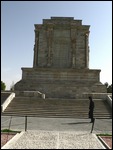
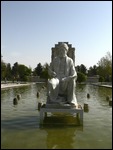
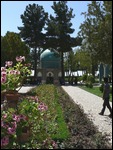

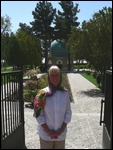

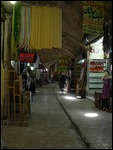






2025-05-22